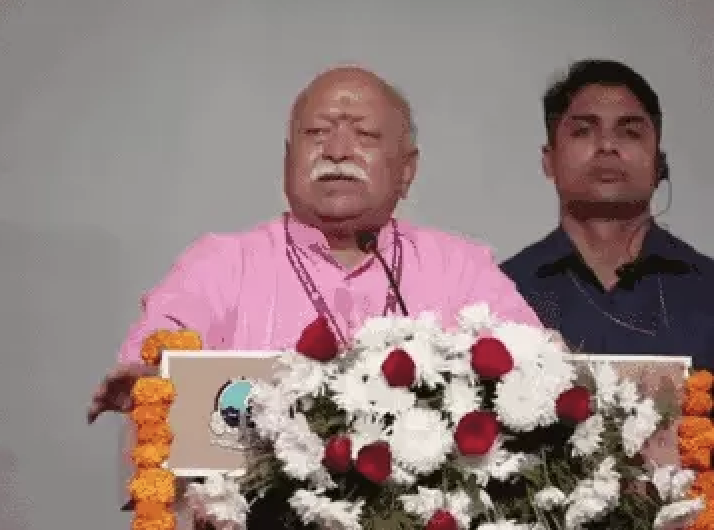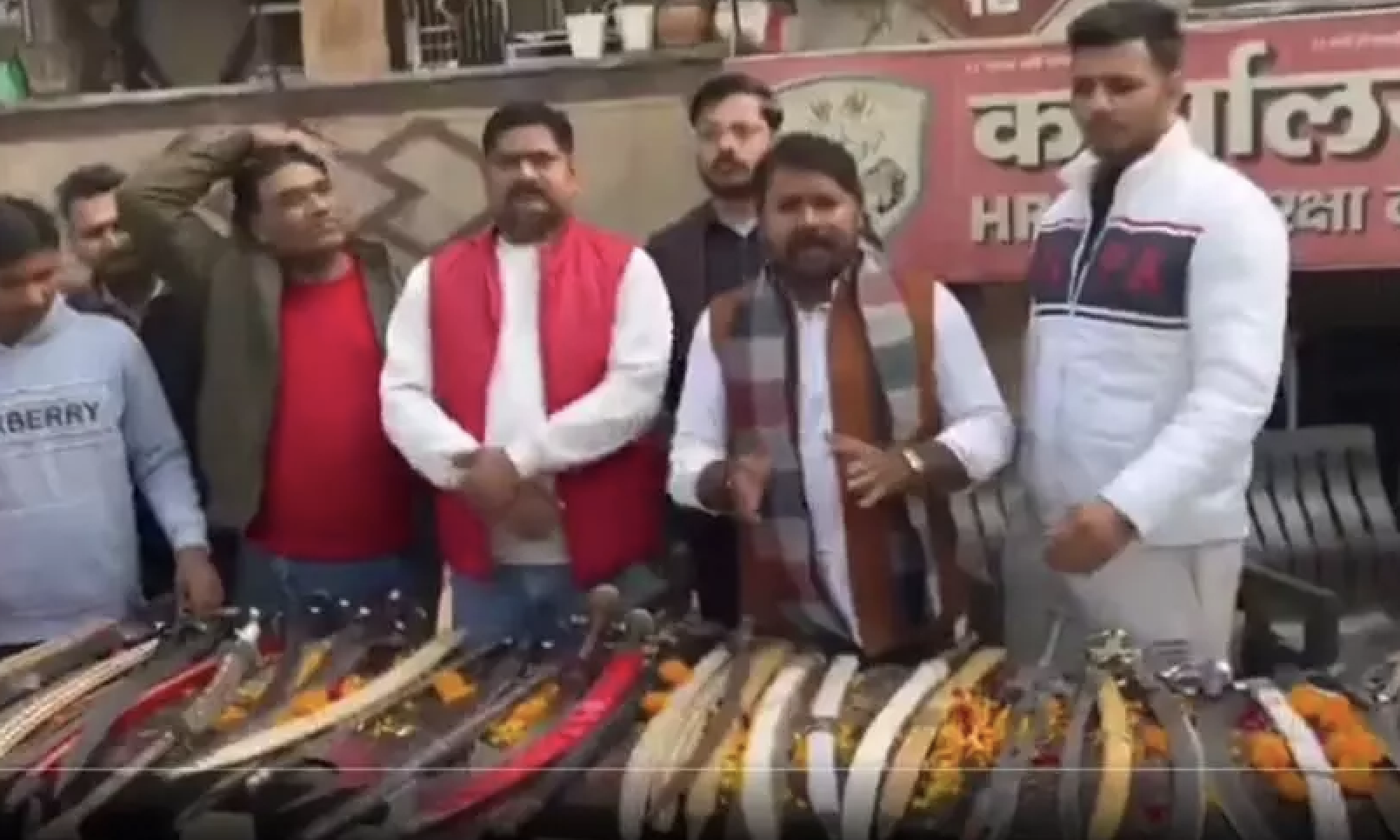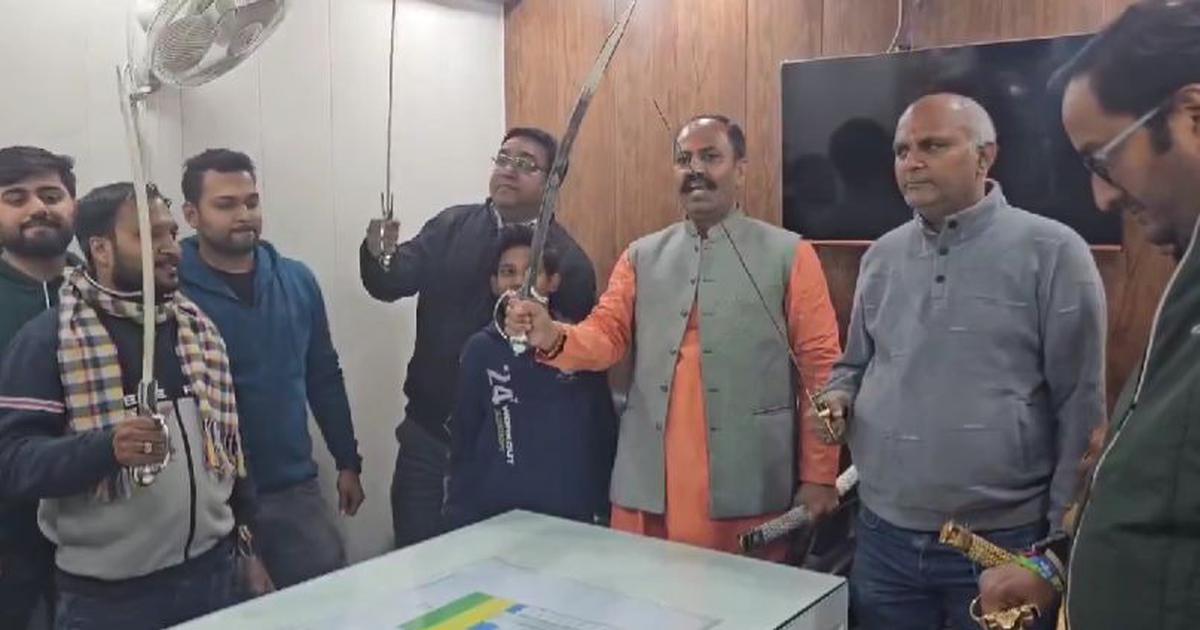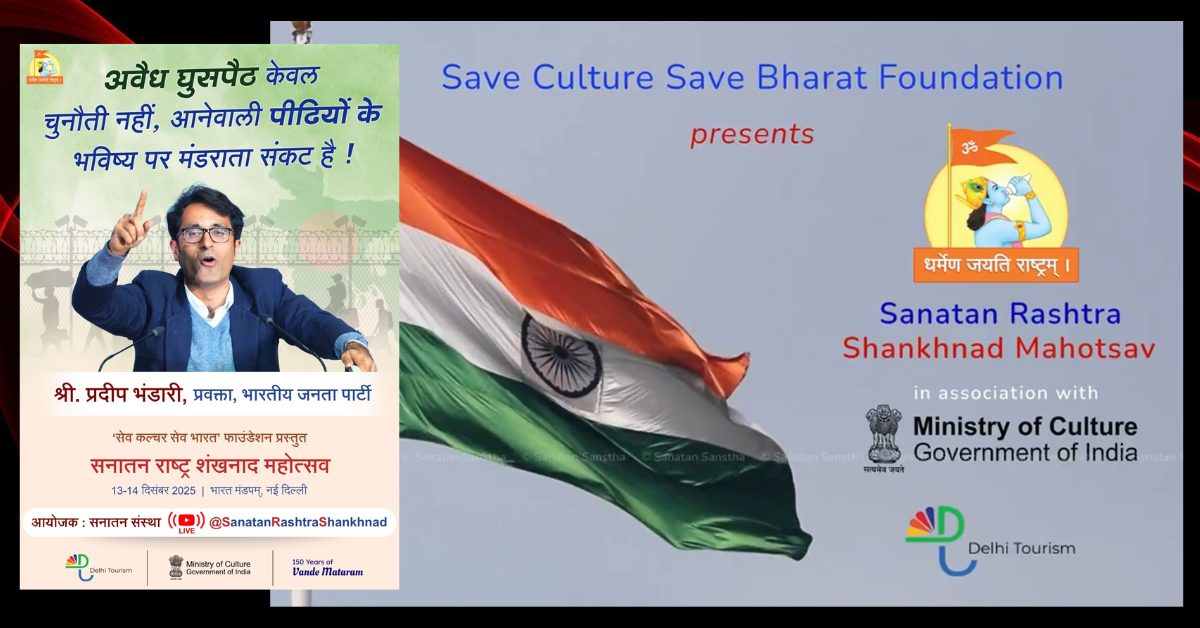
Goa: Ramnathi Ashram in Bandora, Goa, doesn’t quite fit the image of an austere ashram. Situated between the brightly painted Shantadurga Temple and Ramnathi Temple, the ashram flaunts its own bright yellows and whites. It rests on top of a hill. The façade and the sides, all that outsiders can see from the road, give the impression of a gated resort or an apartment complex. This benign setting is the home of the Sanatan Sanstha, a right-wing organization that is at the heart of a multi-state investigation into killings of four rationalists.
The elderly man sitting at the entry gate smiled politely when this writer asked for permission to enter the ashram. From his mobile phone, he called up somebody inside and asked the Mint team to wait. A young man in his twenties stepped out and introduced himself as Bhushan Kulkarni. “We don’t allow the media inside,” he told us with practised politeness. Kulkarni allowed the photographer to take some pictures from the outside but his nervousness grew with each snap.
The Sanstha, founded in 1999 by three doctors—Dr Jayant Athavale, his wife Dr Kunda, and Dr Ashutosh Prabhudesai—clearly doesn’t like the spotlight. What happens inside the Ashram is a matter of claims, counter-claims, interpretations, and connotations, since very few from the outer world have been let in. But it is what the Sanstha is accused of doing beyond the confines and comforts of the Ashram that has become a matter of investigation in two states, Maharashtra and Karnataka. In the third state, Goa, where the Sanstha is headquartered, its Ashram dodges media queries and stays calm. But outside, things aren’t as quiet and “spiritual” as Sanatan Sanstha spokesperson Chetan Rajhans claims they are inside the Ashram.
Murders, bombs, arrests
Since March, a special investigation team (SIT) of Karnataka probing the murder of journalist Gauri Lankesh has arrested and charge-sheeted 12 persons, five of them allegedly related to the Sanatan Sanstha and its affiliate Hindu Janajagruti Samiti. The rest allegedly belong to other radical Hindutva outfits like Sri Ram Sene and Hindu Yuva Sena. In August and September, the Maharashtra Anti-Terrorism Squad (ATS), tipped off by the Karnataka SIT, made nine arrests, five of them reportedly related to the Sanatan Sanstha and the Hindu Janajagruti Samiti , in connection with a plot to carry out low-intensity bomb blasts in Maharashtra and the murder of rationalist Narendra Dabholkar in 2013.


The ATS arrests include a former Shiv Sena corporator from Jalna in Marathwada and two persons allegedly from Shri Shivpratishthan Hindustan, another radical Hindutva outfit based in Western Maharashtra. An ATS official, who did not want to be named, said outfits such as Hindu Janajagruti Samiti , Shri Sriram Sene, and Hindu Yuva Sena, were part of the larger Sanatan Sanstha family and the people arrested so far “only technically” belonged to different organisations.
Now, the ATS, the Central Bureau of Investigation (CBI) probing the Dabholkar murder, and the Karnataka SIT are connecting the dots between the Lankesh-Dabholkar murders and the killings of two other rationalists, Govind Pansare and M.M. Kalburgi. Since September 2015, Maharashtra police and CBI have made two arrests in the Pansare and Dabholkar cases and both these persons are said to be Sanatan Sanstha members. Besides, a chargesheet filed by CBI in the Dabholkar case in 2016 named two Sanatan Sanstha ‘seekers’ Sarang Akolkar and Vinay Pawar as the actual shooters.


All these arrests (see graphic for details) have put the Sanatan Sanstha under scanner and revived the demand, first made in 2009 in Goa after the Margaon blast, to ban it. In 2011, Goa, Maharashtra, and Karnataka, sent independent proposals seeking a ban. This was turned down by the Union government citing lack of evidence. More recently, the Maharashtra government has sent a revised proposal to the Narendra Modi-led government at the centre recommending a ban. In Goa and Maharashtra, the Congress party has demanded that the Sanstha be banned in the light of the latest arrests.
Sanstha spokesperson Rajhans, however, blames a “political conspiracy hatched by the so-called progressive people, the Congress party and like-minded political parties to create a climate in which pro-Hindutva organizations could be banned”. “We are being deliberately targeted. Ever since 2008, the Sanatan Sanstha has been charged with involvement in seven cases but nothing has been found against us. We don’t figure in any chargesheet, there is not even a first information report against the Sanstha. Yet, this persecution goes on. We will fight this out legally and on streets,’’ Rajhans told Mint.
The birth of a cult of the Sanstha’s three founders, only one—Athavale—remains in the saddle. Athavale’s wife Kunda left the Ashram in 2003 while Prabhudesai split from the Sanstha in 2009 after a bitter fight with Athavale. In 2009, Prabhudesai filed an affidavit in a Panaji court in which he said his wife was indoctrinated by Athavale. Prabhudesai did not respond to calls and text messages sent by Mint. Rajhans says Athavale does not hold any official position in the Sanstha now but continues to be its “guru, philosopher, and inspiration”.
The Sanatan Sanstha website says the “aim of the Sanstha is to impart spiritual knowledge to the curious in the society, inculcate religious behavior in the masses and providing personal guidance to seekers for their spiritual uplift”. While that sounds innocuous, the objectives of its affiliate Hindu Janajagruti Samiti are alarming. The Hindu Janajagruti Samiti wants to establish a Hindu Rashtra in India and its website says the ‘Real Hindu Nation’ or “God’s Kingdom” (Ishwari Rajya) will be established between 2023-25. It attributes “sorrow, poverty, and misdemeanours everywhere in India to the secular government”. The Sanastha mouthpiece Sanatan Prabhat routinely reviles “secular politicians”.
When confronted about this, Rajhans told Mint the “periodical had its own intellectual rights to put forth its views”. “If there is anything wrong printed, the home ministry can take action,” Rajhans says. He also pointed out that the Sanstha has long demanded that the term “secular” inserted in the Preamble to the Constitution be removed. “This has been our constitutional demand and the Constitution itself provides for such an amendment,” he says.
Rajhans says the Sanstha is engaged in carrying out spiritual activities and raising consciousness of the Hindus towards their religion. “I believe there could be around 1 lakh seekers doing the Sanstha work outside the Ashram. In the Ramnathi Ashram alone, there are 250 full-time seekers. We started off in three states of Goa, Maharashtra, and Karnataka, but our work has now spread into 17 states,” Rajhans claims.

It all began in the Ramnathi Ashram in Ponda, Goa, which was set up in 1999. It is in Goa where the Sanatan Sanstha took on the avatar of a cultural cult to gain traction and even become an electoral player. The Marathi-Konkani population in Goa has its own religious-cultural symbols rooted more in the mould of traditional folklore than in a religious code of conduct. The local population in Ponda was always sceptical about the ashram. In fact, Vasant Bhatt, 52-year-old priest of the Ramnathi temple, locates the first fault-lines in 2009 when the Sanstha’s involvement was suspected in the Margaon blast.
The Narkasur Pratap ritual—where the effigy of Narkasur, who represents evil, is burnt by people to start Diwali celebrations—is a big public festival here. Typically, the Narkasur is a symbol of social evils that need to be eradicated. “It has been part of our culture and tradition. But the Sanstha tried to change it and put up posters all over Ponda saying there was no such tradition in Hinduism. By 2009, it had also started imposing a code of conduct during the Ganpati festival, another popular public ritual here. The Sanstha was basically interfering in the native culture and imposing a codified version of Hinduism. It was ahead of Diwali in 2009 that the Margaon blast happened,” Bhatt says.

Like Bhatt, 26-year-old local youth Saurabh Lotlikar, who runs an organization called Ramnathi Yuva Sangh, also opposed the Ashram and the Sanatan Sanstha’s interference. “In the 2017 Panchayat election here, there was suddenly a jump of 300 voters when the total number of voters in Bandora panchayat was 850. All these 300 voters were enrolled by the Sanstha and not a single one of them is a native. In 2017, a local person won the seat but next time the Sanstha may win the seat,” Lotlikar says.
He points out another “civic encroachment” by the Sanstha: “They virtually take over the apartment buildings here. If you spot apartments coloured yellow and white, take it that they are inhabited by the Sanstha members. They acquire some 10-12 flats in a building of 20 flats and go to the builder to get the colour changed,” Lotlikar says.

Damodar Mauzo, Goa-based literary writer and Sahitya Academy winner who, according to the Karnataka SIT is also one of the persons on the hit-list of militant Hindutva organizations, recalls the early days in Goa soon after the Sanstha was founded and the Ashram was set up. “In a sense, Goa was a very soft ground for these people since people here respect each other’s privacy and don’t normally enquire into what is happening in the neighbourhood. We initially thought them to be a benign organization. But then, some people who I knew for long started complaining that people who go inside the Ashram are brainwashed and indoctrinated, and that they never return home. Some parents came to me also and reported that their children had been the victims. That’s when I realised there was some problem and soon after the Margaon blast happened,” Mauzo recalls.
The political games
It is after the Margaon blast that the Sanatan Sanstha’s political affiliations in Goa came into picture. Ravi Naik, Goa Congress leader and home minister of Goa in 2009, sought to ban the Sanstha. But it was the Maharashtravadi Gomantak Party (MGP) which has blocked the ban, says Damodar Mauzo. The MGP is Goa’s oldest regional party and has almost always been a part of the ruling dispensation in Goa. Even now, it is part of a BJP-led coalition ruling Goa, and as such the coalition survives on the MGP support.

MGP leader and Goa’s PWD minister Sudin Dhavalikar is a key Sanstha supporter. Dhavalikar is the legislator from Marcaim constituency in which Ponda falls. “MGP has always been part of the ruling structure and Dhavalikar continues to be a minister even now. He is the political force blocking any action against the Sanstha,” Mauzo says. Dhavalikar did not respond to several phone calls made by Mint.
Shyam Manav, rationalist, hypnotherapist, and founder of Akhil Bharatiya Andhshraddha Nirmoolan Samiti (All India Committee for the Eradication of Superstitions), claims that in 2009, when Naik sought to ban the Sanstha, the MGP threatened to pull out of the government. “I met Naik in 2009 and gave him all the information I had about what the Sanstha does and how Athavale was using hypnotherapy to programme minds. But in Goa, a government can fall even if one MLA crosses over to the other side and nothing much happened,” Manav says.
When called for comments, Naik said “he didn’t want to comment at present”. Congress leader and then chief minister Digambar Kamat, however, countered the claim that the MGP exerted pressure in 2009. “Dhavalikar was in cabinet actually but he never exerted pressure. The Dhavalikars are a Pandit family associated with the Mahalakshmi temple and they have been associated with spiritual activities in that capacity. But they cannot be associated with violent acts of any types. In 2009 also when this question was raised, I said the same thing. Having spiritual association is a different thing altogether,” Kamat told Mint.

Asked if the Congress supported the latest move to ban, Kamat said the Goa government “has to recommend that”. The Goa Pradesh Congress Party and Maharashtra Congress have officially taken a position in support of the ban now.
Manav also claims that Dhavilikar’s wife Jyoti Dhavalikar is a Sanatan sadhak (spiritual seeker) one of the trustees at the Sanstha. But Rajhans dismisses the trustee claim as part of the “misinformation campaign”. “No member of the Dhavalikar family has ever been a trustee or office-bearer of the Sanstha. Mrs. Dhavalikar is a sadhak but we have sadhakas from families directly associated with Congress, NCP, and BJP also simply because we are a spiritual organisation,” Rajhans said.
Behind the growth spurt
Observers, sympathisers, critics, and opponents give multiple explanations for the phenomenal growth of the Sanatan Sanstha and its web of “320 supportive Hindu organizations”, according to Rajhans. A senior Bharatiya Janata Party (BJP) leader in Maharashtra, who personally knows many Sanstha members and who did not want to be named, says “by and large the Sanstha comprises people who are harmless”.
“A fine difference has to be made between what the Sanstha preaches and what most of its members do. I have serious objections to the dangerous nonsense the Sanstha preaches, for instance, its love for Hitler and the way Hitler ran Germany. But most of their members are engaged in harmless social and spiritual activities and they come from the downtrodden, lower, and lower middle-class strata. In fact, that is how they have grown by reaching out to the lower economic class and the Other backward Classes (OBCs) and addressing their need for psychological security. This isn’t a militant class,” the BJP leader says.

Shyam Manav sees methods in the Sanstha’s lateral social growth. “In the early years, they stationed themselves in all the police residential colonies where they could reach out to the policemen’s wives. They targeted the wives to inculcate good behaviour among them, like behaving respectfully with their husbands. This created sympathy for them among the policemen,” Manav says. He says the Sanstha, through its mouthpiece Sanatan Prabhat, grew as “yet another cult”. “With his hypnotherapy skills and messages amplified by Sanatan Prabhat, Athavale started programming minds and building a cult. In those early years, Sanstha activists would typically disrupt public events where rationalists or progressive people were supposed to speak. This helped the cult grow,” Manav recalls.
The hypnotherapy card
Manav, who says he was a close friend of the Sanstha founder Jayant Athavale from 1985 to 1990, wrote a scathing critique of the Sanstha in the November 2006 issue of Marathi periodical Kirloskar published from Pune. “It was titled Manavi Roboncha Kaarkhaandar (the manufacturer of human robots) and it referred to Athavale and his programming of the Sanstha members using his brilliant clinical hypnotherapy techniques. “Though the Sanstha was founded in 1999, I had figured out in the early 90s that the obsession with spirituality had led Athavale astray from the science of hypnotherapy. He had started resorting to the magicians’ tricks, which I was aware of since I knew many magicians, to claim paranormal spiritual powers in himself,” Manav said.
In 2011, it was a mix of public knowledge about the Sanstha and personal experience that prompted 38-year-old Vijay Rokade, who works as a senior scientist at a chemical company in Khopoli near Mumbai, to file a petition in the Bombay high court against the Sanstha describing it as a “terrorist organization and seeking a ban”. Rokade was joined by three other persons who the petition says “suffered wrongful loss due to the canvassing and propagation of hypnotism systems practised by the Sanatan Sanstha”.
Rokade says he got married in 2007 and came to know later that his wife is a member of the Sanstha and she practised spiritual activities guided by Athavale. His wife left him six months after marriage and joined the Ashram. “The petitioner also states that having passed few months after the marriage and not leading the matrimonial duties by his wife, he came to know that the practices of spiritual activity are nothing but the activity guided, controlled, and supervised by the system of Eriksonian Hypnosis practised by the Sanstha,” the petition says. Eriksonian Hypnosis is a specific method of hypnosis recognisable by the use of indirect suggestion and named after American psychiatrist Milton Erikson.
The role of Hindu Janajagruti Samiti
In the later years, affiliates like the Hindu Janajagruti Samiti , with their own militant antics, helped the Sanstha gain notoriety. Satish Naik, Thane-based painter who edits an art magazine Chinha in Marathi, bore the brunt of the Hindu Janajagruti Samiti in 2011 when Chinha was working on a special issue on “nudity in art”.
“Initially a woman called to seek appointment to discuss the career prospects in arts for her son. I told her I could guide her on the phone but she insisted she wanted to meet. The next day, some five-six people including a woman turned up at my residence, saying they came from the Hindu Janajagruti Samiti . They argued with me for about an hour and asked me to not publish the issue. When I refused to yield, they asked for a donation for the Sanatan Prabhat which I rejected outright,” Naik recalls.

The next day, Sanatan Prabhat published his business card in the newspaper with his mobile number. “In the next eight days or so, I received some 200 calls from all over Maharashtra and even parts of Rajasthan and Bihar, threatening me with abusive language. Many among those who called were women who used the most filthy language I have ever heard,” Naik said. Apart from the official Hindu Janajagruti Samiti hate mail, Naik also received unsigned postcards in abusive language (Mint has browsed through these) threatening him with dire consequences if the magazine went ahead with the nudity issue.
The Hindu Janajagruti Samiti also warned Naik against carrying an article on M. F. Husain who the Hindu Janajagruti Samiti claimed had “selectively insulted the Hindu gods by painting them nude”. “It was a nasty effort to muzzle art and the artistic community. But we went ahead and published the issue including the Husain piece,” Naik told Mint.
The Sanatan Sanstha-RSS faultlines
On the face of it, the crackdown on the Sanstha under a BJP-regime appears ironical, given the party’s commitment to Hindutva and the Rashtriya Swayamsevak Sangh (RSS) parentage. But beneath the surface lie some key contradictions. The RSS has always kept the Sanatan Sanstha at a distance.
Manmohan Vaidya, the Sah Sarkaryawah (joint general secretary) of the RSS, told Mint that the RSS had had no association or sympathy for “any militant organisation”. “We have nothing to do with it and we have always opposed violence of any kind,” Vaidya says.

Maharashtra BJP spokesperson Madhav Bhandari toed the same line. “The BJP is against violence in the name of religion. At the same time, only the due course of law will determine whether the people picked up so far are guilty or not,” Bhandari told Mint.
Dilip Deodhar, Nagpur-based observer and sympathizer of the RSS, identifies the Sanatan Sanstha as the current avatar of “militant and communal Hindutva” that began with V.D. Savarkar, the Hindu Sabha, and its later version Hindu Mahasabha. “Savarkar’s Hindutva was religion-based as it did not regard the Christians, Muslims, Parsees, as Hindus. So it was communal Hindutva as against the civilizational and cultural Hindutva of the RSS. The Sanatan Sanstha belongs to the militant and communal Hindutva school,” Deodhar told Mint. He explained the contradiction using the differences between the Communist Party of India (Marxist), the CPI (Maoists) or the Naxals. “We don’t paint them in the same colour. The Naxals, though Leftists, are extremists and militant and the CPI (Marxist) rule in Bengal did crack down on them,” Deodhar says.
But Jyotirmaya Sharma, professor of political science at University of Hyderabad, who has studied and written at length about the phenomenon of political Hindutva, says the RSS cannot be exonerated. “While the RSS might distance itself from the militant Hindutva groups, it has always selectively endorsed the retributive violence the kind of which these fringe groups have resorted to. The RSS has always in that sense sent out confusing signals to those militant fringe groups regarding its position on retributive violence, in the process emboldening them,” Sharma told Mint.
Sharma says the RSS itself believed in violence as part of its ideology, stressing that “The RSS has by and large believed in the strategy of guerrilla warfare as part of its ideology which it has derived from Shivaji’s political guru Ramdas. Politically, it has always believed in the hit-and-run kind of strategy which again sends out confusing signals to those militant fringe groups,” Sharma says.
The political scientist also makes a point about the larger moral void in the Sangh Parivar. “Though it might be trying to distance itself from the violent activities of the militant Hindutva groups, the RSS and its affiliates, including the BJP, do not any longer possess a person of any moral stature who could, by his words and actions, send out a clear message to this violent fringe that such activities will not be tolerated and who the cadres would listen to,” he says.
Chetan Rajhans says Sanatan Sanstha is inspired by the former executive president of Bharatiya Majdoor Sangh, an RSS-affiliate, Gajananrao Gokhle’s idea of “Adhyatmik Rashtravaad” (Spiritual Nationalism). The cornered Sanstha also expects some leniency from the RSS and BJP. Rajhans says the RSS, being a “large organization of the Hindus that itself has suffered persecution and bans”, must come to the rescue of the Sanstha “when it is being framed up”. “But nowadays it is the BJP which runs the RSS and I doubt if our expectation is addressed,” he said.
The Maharashtra BJP leader quoted earlier, however, distanced the government from the probe. “This is purely a crime investigation and there is nothing political about it,” he said when asked if the BJP wanted to segregate the “militant fringe of Hindutva”. “Also, why would the BJP go after them just for the heck of it? Projecting this as our action against the Sanstha could be politically, philosophically, and theosophically counter-productive for the BJP”, he added.
The end game
In August 2018, after the ATS arrests, the Maharashtra government sent a revised proposal to the Centre seeking a ban on Sanatan Sanstha. But a senior ATS official pointed out a “serious anomaly” that he thinks has weakened the case. “For operative reasons, neither the Karnataka SIT nor the CBI nor Maharashtra ATS have named the Sanstha in the case so far. If we are seeking a ban on an organization, we have to establish the organization’s involvement in terror activities,” the official said requesting anonymity.
It is this “anomaly” that the Sanstha is exploiting as well. Dismissing the demand for ban as “prejudiced and political”, Rajhans said the Sanstha’s “role” was alleged in seven cases, starting from the Thane blast in 2008, but none of the cases has named us or proved our involvement. “If the CBI, ATS, and SIT are so sure, why haven’t they named us yet? We are a charitable trust engaged in spiritual activities, we file income tax returns, our activities are in public domain. The demand for ban is part of the conspiracy which believes in the dictum—call a dog mad and shoot it,” Rajhans says.
However, three factors make the case for ban on the Sanstha stronger in 2018 than in 2009 or 2011 when three states sought this action. The Karnataka SIT, according to the inputs it has shared with Maharashtra ATS, is close to cracking the Gauri Lankesh murder case in which five of the 12 charge-sheeted have strong Sanstha or Hindu Janajagruti Samiti connections. The Karnataka SIT has also passed on crucial intelligence to Maharashtra and to the CBI about the significant and material similarities between at least the Lankesh murder and the Dabholkar murder. Also, the ATS is probing if the 17 pistols it recovered from those arrested in August were used in all four assassinations.
Finally, the Maharashtra ATS thinks it has a strong case against the Sanstha about a terror plot in parts of Maharashtra and is also confident that it has nailed the actual shooters of Dabholkar during the interrogation of Hindu Janajagruti Samiti activists Kalaskar and Andure. The various investigating agencies are confident that if they are able to crack at least two murder cases, and connect them to the other killings and the “hit list”, a solid dossier could be built against the Sanstha this time. The next four months will be crucial.
This story first appeared in LiveMint on September 12, 2018 here.









